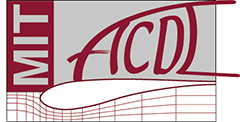Abstract: Turbulence, shock formation, and sharp interfaces in inviscid flows are prone to high wavenumber mode generations. This continuous generation of high wavemodes results in a cascade of energy to an ever smaller scales in turbulence, creation of shocks in compressible flows, and generation of sharp interfaces in two-phase flows. Traditionally, this high wavenumber irregularity is remedied by the addition of a Laplacian term (viscous term) in both compressible and incompressible flows. In this talk, I introduce the concept of observabilityof field quantities and the consequence of that on the Gauss divergence theorem and Stokes curl theorem. Observable Gauss and Stokes theorems are then derived. These theorems allow the derivation of `regularized’ field quantities from basic conservation laws. To this end, `observable’Euler and Navier-Stokes equations are formally derived. It is expected that these equations simultaneously regularize shocks, turbulence, and sharp interfaces. Several theoretical results (including existence, uniqueness, convergence to entropy solutions, and observable Lie bracket) and numerical simulations (including 3D turbulence, shock-turbulence interaction, and two-phase flows) will be presented and compared with existing numerical methods. Finally, I will discuss how the observable field theory could be applied in other disciplines involving problems with wavenumber-infinity irregularities such as fracture, crack propagation, sharp interfaces in electromagnetism, etc.
k- Irregularity in Computation of Problems with Shock, Turbulence, and Sharp Interfaces: Problem Statement and Solution
27 April 2018
12:00 pm to 1:00 pm
k- Irregularity in Computation of Problems with Shock, Turbulence, and Sharp Interfaces: Problem Statement and Solution
Kamran Mohseni
University of Florida at Gainesville

